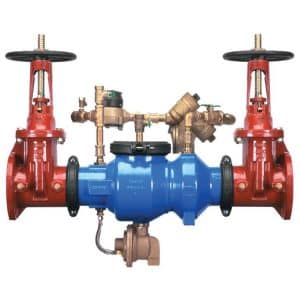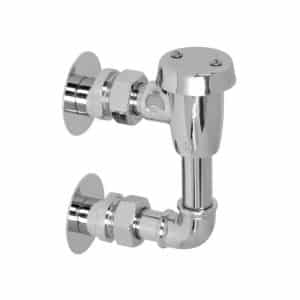Editor’s Note: This article was originally published August 14, 2020. It has since been updated.
If you’re reading this blog, chances are you already know about the very real dangers of backflow, where a cross-connection can allow non-potable water to contaminate the drinking water supply. And yet, despite backflow incidents that regularly generate headlines, tens of millions of dollars paid out in litigation, and water system professionals across the country bringing attention to the need for cross-connection control, it’s surprising how many people remain unaware – or unconcerned – about the threat their facilities may pose to public health. The problems exist. The risks are grave. The costs are ruinous.
But cross-connections aren’t an unsolvable problem. There’s a clear-cut, unequivocal, no-fooling-around solution to: cross-connection control surveys.
10 Gaps in Cross-Connection Control Programs & How to Fill Them
Sit-Rep
We’ve seen many documented cases where cross-connections contaminate the public water supply or a facility’s potable water system, resulting in illnesses or even deaths. Just consider:
- In 2021, a construction company in Gulf Breeze, Florida, mistakenly connected a sewer line to the water main, resulting in sewage-contaminated water running through more than 300 homes.
- In 2021, a university hospital discovered a cross-connection between drinking water pipes and the toilet water drainage system that had been present since the construction of the facility in 1993.
- In 2022, drinking water at an elementary school in Carlsbad, California, was contaminated after they suffered a cross-connection between recycled water and their potable water system.
- In 2024, residents in West Springfield, Massachusetts, discovered an “oil-like” substance in their water supply due to an unprotected cross-connection between a private plumbing system and the municipal supply.
- Also in 2024, a U.S. hospital mistakenly delivered nitrous oxide to an eight-year-old child due to the mislabeling of a medical gas pipe that was purported to be carrying oxygen. The child died.
Public water systems in each state are responsible for preventing unapproved water sources from entering the public water supply. The EPA has given primacy to state governing bodies, meaning each state operates under its own legislation and administrative code. Regulatory agencies in most states require public water systems to develop and maintain a cross-connection control program. These programs often include things like annual testing of backflow prevention assemblies, hazard classification, and annual reports.
But the first essential step in any effective cross-connection control program is the survey. If you don’t look, you won’t find.
Types of Surveys
Not all cross-connection control surveys are created equal. Different surveys accomplish different goals. Here’s a quick primer on the types of cross-connection control surveys a water purveyor can conduct: containment and isolation.
Containment
A cross-connection control survey always begins at the service connection or water meter. All service connections must be identified and evaluated to determine if they are in fact contained–i.e., if proper backflow prevention is installed at the service connection. Some facilities like hospitals, where maintaining continuous operations is essential, have more than one service connection. It may be beneficial to obtain underground piping drawings of the city water supply to assist with the containment assessment, particularly if there are storage tanks, underground interconnections, and if multiple city water supplies are present.

Example containment device: reduced pressure detector assembly
Containment assessments should identify and evaluate:
- All city water service connections and auxiliary water supplies to the property
- Fire protection systems, lawn irrigation systems, and other water piping supplied directly by the public water system (i.e., chemical additives, auxiliary water supply)
- All containment backflow prevention assemblies
- Any water storage tanks on site
Isolation
An isolation survey determines whether both the private and public water systems are properly protected, defining the level of hazard the facility represents to the public water supply. A complete isolation survey requires that each cross-connection, as well as all backflow prevention devices, methods or assemblies, be identified and evaluated. That means looking at every connection and point of use from the service connection and all throughout the property.

Example of isolation device: atmospheric vacuum breaker
Isolation surveys include:
- Tracing the existing potable water piping system from the meter to all terminal ends
- Performing a point-of-use survey in areas where piping is concealed
- Inventorying and evaluating all existing backflow prevention devices, methods and assemblies at all cross connections
- Evaluating pipe labeling and making corrections as necessary
- Creating an itemized list of corrective action requirements
The Bottom Line
Cross-connection control surveys are foundational to an effective program. They should be conducted in light of industry regulations, best practices, and guidance from the utility’s cross-connection control ordinance. To be successful, you need base knowledge of your water system; trained, experienced and certified personnel to conduct on-site surveys; and strong back-office staff to manage logistics, scheduling, data, and reporting.
The result? Your public water system will gain invaluable and accurate information of your water distribution system! And, when conducted correctly, such a survey will provide the information you need to protect both public and facility water systems.
Remember: If you don’t look, you won’t find.
Ready to learn more about how HydroCorp can support your water system’s cross-connection control efforts, including in on-site surveys?


